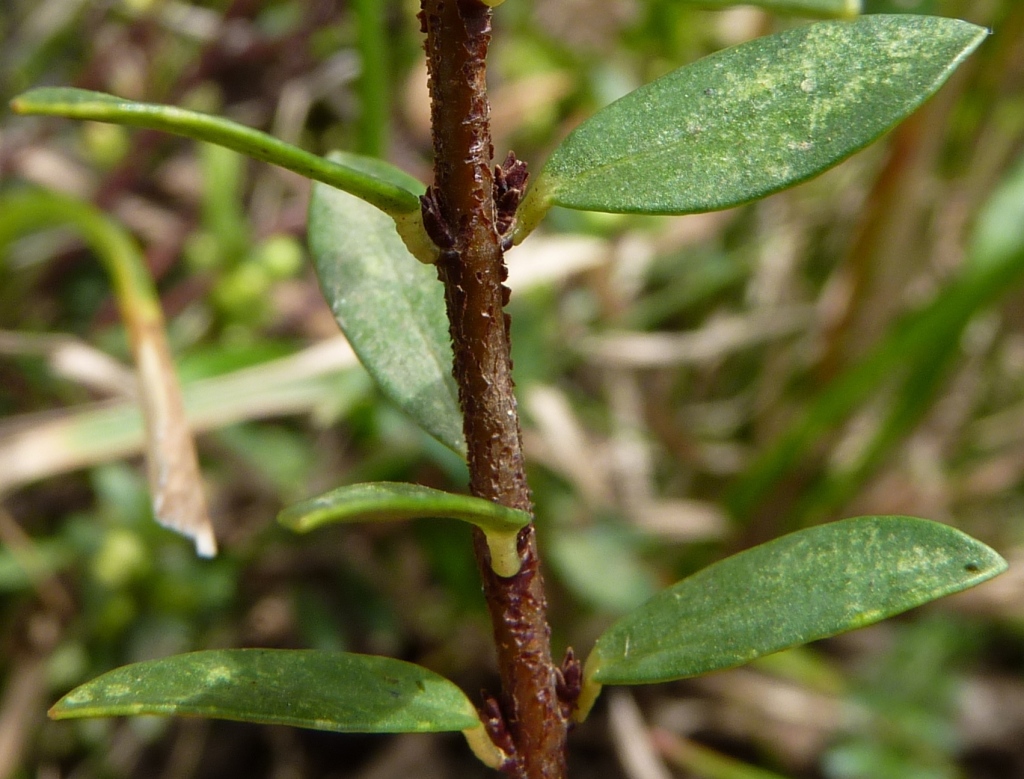Pimelea axiflora
F.Muell ex Meisn.Shrub or subshrub 0.2–3 m high; stems glabrous or hairy. Leaves opposite, shortly petiolate, linear to oblong-elliptic, 3–75 mm long, 1–12 mm wide, mid green on upper surface, paler below, glabrous. Inflorescence axillary, a head of 2–10 flowers; involucral bracts papery, 2–4 (rarely 6), petiolate, elliptic or narrowly elliptic, mostly 2–7 mm long and 1–3 mm wide, entirely glabrous or hairy outside, brown or green, subtended by minute bracts. Flowers unisexual, white or whitish, hairy outside, glabrous inside; floral tube 2–6 mm long, style-portion of female flowers shorter than ovary-portion; sepals 1–3 mm long; pedicel hairy; stamens shorter than sepals; anthers opening laterally or somewhat laterally. Fruit dry, enclosed or with apex protruding, floral tube circumscissile above ovary or irregularly splitting lower down.
VVP, VRiv, GipP, OtP, WaP, CVU, GGr, NIS, EGL, EGU, WPro, HSF, HNF, OtR, Strz, MonT, HFE, VAlp.
3 subspecies, 2 occurring in Victoria.
Entwisle, T.J. (1996). Thymelaeaceae. In: Walsh, N.G.; Entwisle, T.J., Flora of Victoria Vol. 3, Dicotyledons Winteraceae to Myrtaceae, pp. 912–930. Inkata Press, Melbourne.
 Spinning
Spinning

